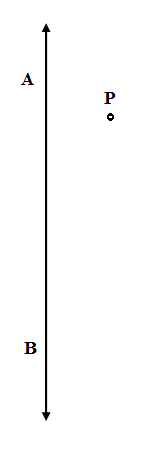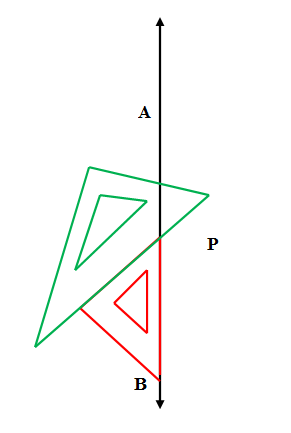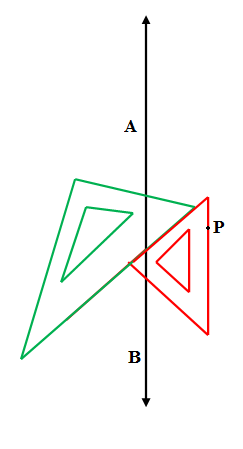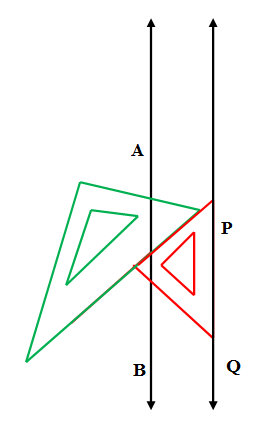
To draw parallel lines we use,
A. Compass
B. Divider
C. Scale and set squares
D. Scale and protractor
Answer
483k+ views
1 likes
Hint: We recall the definition uses of scale, divider, compass, protractor and set squares. We recall the definitions of parallel lines and demonstrate how we can use edges of set squares to draw a parallel line of
Complete step-by-step solution
We know that in our geometry box different types of instruments are used. The scale or ruler is an instrument used to measure the length in cm or inch of distance between two points and also to draw straight lines. A divider otherwise known as a compass is used to locate points while a compass is used to draw arc and circle. A protractor is an instrument to measure angles with the unit degree.
The set squares are a type of drawing instrument whose two edges are perpendicular to each other. There are two types of set squares. The smaller one is
Parallel lines are two straight lines that never intersect each other. We draw the rough figure of two straight lines
We draw parallel lines with the help of a scale and set squares, for that we first draw the line

We align the hypotenuse of

We fix the

We use to draw the line through P and extend with a scale to get the parallel line of

So the correct option is C.
Note: We note that the distance between two parallel lines is always equal. This method of drawing parallel lines is also used to construct trapezium. If the lines are not parallel then they are intersecting. We can also draw parallel lines using scale and compass taking arcs of equal width.
Complete step-by-step solution
We know that in our geometry box different types of instruments are used. The scale or ruler is an instrument used to measure the length in cm or inch of distance between two points and also to draw straight lines. A divider otherwise known as a compass is used to locate points while a compass is used to draw arc and circle. A protractor is an instrument to measure angles with the unit degree.
The set squares are a type of drawing instrument whose two edges are perpendicular to each other. There are two types of set squares. The smaller one is
Parallel lines are two straight lines that never intersect each other. We draw the rough figure of two straight lines
We draw parallel lines with the help of a scale and set squares, for that we first draw the line

We align the hypotenuse of

We fix the

We use to draw the line through P and extend with a scale to get the parallel line of

So the correct option is C.
Note: We note that the distance between two parallel lines is always equal. This method of drawing parallel lines is also used to construct trapezium. If the lines are not parallel then they are intersecting. We can also draw parallel lines using scale and compass taking arcs of equal width.
Latest Vedantu courses for you
Grade 10 | MAHARASHTRABOARD | SCHOOL | English
Vedantu 10 Maharashtra Pro Lite (2025-26)
School Full course for MAHARASHTRABOARD students
₹33,300 per year
Recently Updated Pages
Master Class 4 Maths: Engaging Questions & Answers for Success

Master Class 4 English: Engaging Questions & Answers for Success

Master Class 4 Science: Engaging Questions & Answers for Success

Class 4 Question and Answer - Your Ultimate Solutions Guide

Master Class 11 Economics: Engaging Questions & Answers for Success

Master Class 11 Business Studies: Engaging Questions & Answers for Success

Trending doubts
Full Form of IASDMIPSIFSIRSPOLICE class 7 social science CBSE

What does R mean in math class 7 maths CBSE

How many crores make 10 million class 7 maths CBSE

Fill in the blanks with appropriate modals a Drivers class 7 english CBSE

The southernmost point of the Indian mainland is known class 7 social studies CBSE

Convert 200 Million dollars in rupees class 7 maths CBSE





